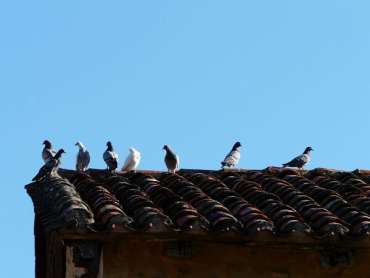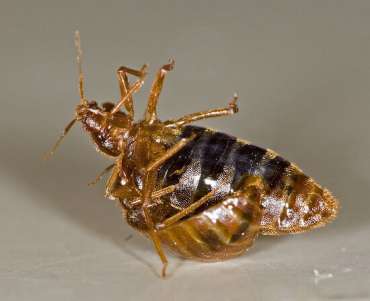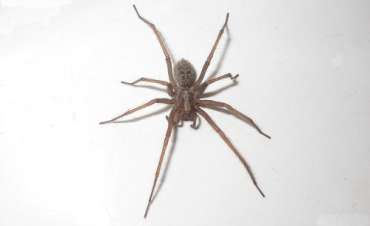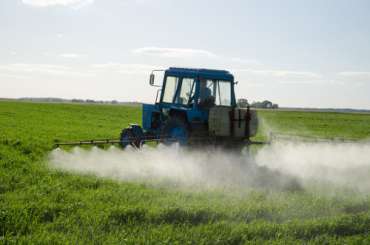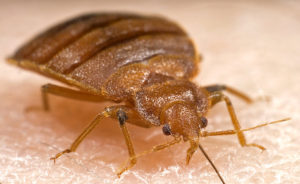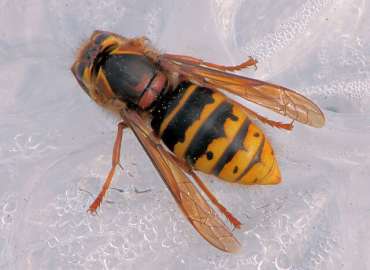Posted on December 7, 2021
in uncategorized

This chapter is about bird control methods. Should you or shouldn’t you use chemical pest control means to get rid of the vermin? It can be tricky because some types of birds are beneficial to your garden, and you have to make sure that you use the right methods to only keep the annoying birds away. Bird Control Methods In the United Kingdom some bird species are considered as pests. If you ask anyone who’ve had birds landing, roosting and nesting in their business property, he will be glad to hear that there are plenty of methods to eliminate or deter these nuisance pests. In large numbers birds can be responsible for variety of problems to your business such as pigeon diseases spread through their feces, including histoplasmosis, cryptococcosis, and psittacosis. It’s really important to take measures on time, otherwise some damage to property and equipment may also occur. Another problem that farmers may face is birds attacking their crops and fruit orchards. Several bird control methods may solve this problem. The most effective ones are generally a combination of a few pest control techniques. Which bird species are seen as pests in the UK Black-backed gull; Lesser black-backed gull; Herring gull; Feral[...]
Posted on December 7, 2021
in uncategorized

Finally, we’ve managed to get all bed bugs facts and myths in one place. This guide will get even bigger over time and we will try to cover any information related to bed bugs that are either a fact or a myth? General Facts & Myths About Bed Bugs Bed Bug Myth #1 – Bed Bug Are Most Active at Night? True. Bed bugs usually crawl out under your mattress and will attack you in your sleep when it’s dark. However, the nasty insects would feed during the day as well if they feel safe. Bed Bug Myth #2 – Eggs and shed skins are a sign of bed bug infestation? Mostly False. Bed bug’s eggs are distinctive but it’s still possible to not recognize them or mistake them with those of other insects. Skin sheds are easier to define but only if they are whole. The only true sign that there is a bed bug infestation is seeing living bed bugs. Bed Bug Myth #3 – Bed bugs live in clothes?! Very true. Bed bugs will get inside your clothes because this is the way they move long distances. It’s also the main reason for domestic infestations – people coming[...]
Posted on December 6, 2021
in uncategorized

You must have seen different spiders in your house, but do you know their names? There are over 600 species of spiders in the UK and you may have encountered most of them one way or another. Some species prefer to live outside in nature, while others find your home to be the perfect place to live. Here are some of the most common spiders you would find in your British home. False Widow Spider Name: Steatoda nobilis, or also known as noble false widow and referred to as the false widow.Appearance: Body length without legs of adult female is between 6-11 mm, while in males it ranges from 4-9 mm. The brown bulbous abdomen is with a cream-coloured marking which is often compared to the shape of a skull. Legs are reddish-orange.Life Span: Females can live up to six years, while as per usual – males don’t live long after mating. His total life span is about 12 to 18 months total.Habitat: Native to Madeira and the Canary Islands from where it allegedly spread to Europe. Arrived in England before 1879, perhaps through cargo ships. From its origin, we understand this spider usually prefers southern climates and warmer settings, nonetheless,[...]
Posted on December 6, 2021
in uncategorized

Woodlice may look like insects, but in fact, they are fourteen-legged crustaceans related to lobsters. Unlike their relatives, however, they have adapted to living on land. Still, woodlice need a damp conditions to be able to survive. It’s thought there are about 3,500 species of woodlice in the world and about 35-40 of these can be found solely on the British Isles. Some species such as the common sea slater are only found on the coast. Woodlice are a common pest nuisance in humid climates and damp conditions, mostly in gardens and wooden structures. Woodlice Identification It’s pretty easy to identify a woodlice problem, as they have very specific characteristics. The problem is catching a glimpse of them, as they are active mainly at night. A woodlouse has an outer shell called an exoskeleton, which it must shed as it grows. The moult happens in two stages, unlike that of most arthropods which are shed all at once. The first back half of the shell is shed and a day or so later the front half falls off. Woodlice also have a pair of antennae to help them find their way around and two small ‘tubes’, called uropods on the back of their[...]
Posted on December 6, 2021
in uncategorized

After the detailed guide on biological pest control in the previous chapter, it’s now time to present you anything you need to know about the chemical pest control methods used for pest extermination anywhere across the world. They are not so sustainable as the organic ones but are often more effective and will be used in future even more extensively. You need to be familiar with the most popular chemical pesticides and their effect on production and the environment because it’s strictly related to your health. Chemical pest control methods Chemical pest control methods have been used for thousands of years by civilizations which had much less knowledge than the current population. Sumerians found out that sulfur gives great results in insect extermination. However, the actual revolution in chemical pesticides happened during the 18th and 19th century when the industrial revolution required much more efficient pest treatments in terms of scale, effectiveness and speed. To present days, chemical pest control methods are among the major types of vermin extermination practices and despite the fact that pesticides often lead to serious health issues, chemical compounds are vastly produced and sold across the whole world. Here are the major types of chemical pesticides that are[...]
Posted on December 6, 2021
in uncategorized

The history of bed bugs in the UK begins a little while before WWII. The Cimex lectularius is the type of bed bug that is native to Europe and the UK. Bed bugs weren’t common to the UK until the 1930s and since then the problem has grown.In fact, immediately after WWII, it’s reported that nearly 30% of British homes were infested with these wicked bugs. Such a drastic increase in their population was attributed to the heating systems used in homes which created more pleasant living conditions for them to thrive in.In 2017, The Sun published an article saying that “…the numbers of bed bugs have tripled in the past five years.”This is not only a problem because it sounds like an almost epidemic level of bed bugs in the country, but also because over time bed bugs have become resistant to many of the pesticides once used to eradicate them in all of their life stages. Where do bed bugs come from? The origin of bed bugs dates back hundreds of years BC, back when our ancestors lived in caves. The bugs originally were parasites that used bats for hosts and lived with them inside caves. Then people came into the caves[...]
Posted on December 6, 2021
in uncategorized

There is a huge interest among people about the difference between a queen wasp and a normal wasp. From Panther Pest Control we decided to make a detailed post about it that contains the most common questions related to this interesting topic. In this guide, you will learn how normal wasps turn into queens, how the two types of wasp live, hunt and multiply. How Does a Wasp Become a Queen Wasp at First Place? To get a queen in a wasp nest you need fertilized eggs. These eggs contain female wasps which are usually the workers in the colony. There is always at least 1 queen in the nest, which choose the females wasps that will be turned into the new queens. When the choice is made the queen wasps start a complex process of special care for these wasps. It’s still somehow unknown the process of turning specific normal wasps into queens. Scientists say there is a special hormone which the queen gives to the choselogn wasps. Afterwards, these insects that have been given special care, grow faster and differently, finally turning into the new queens of the colony. How Big is a Queen Wasp – Difference in Queen Wasp Size Usually, the queen[...]
